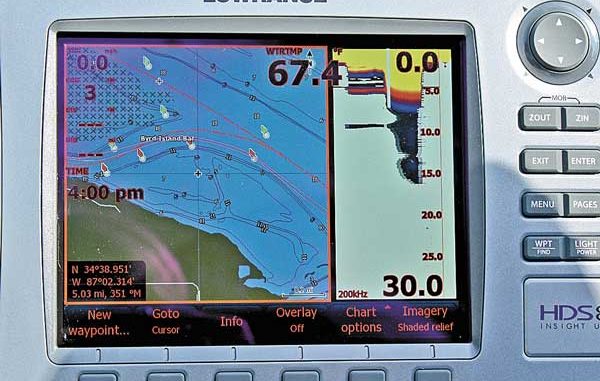
Area biologists give their picks for the top public areas for deer, squirrel, rabbits and more this season.
At almost every seminar and tournament, I’m often asked how I’ll fish a new lake. Today, advanced technology allows anglers to quickly and easily obtain information on lakes all over the country. Here are the steps I’ll take to fish a new lake:
• Buy lake maps. The quickest, easiest and cheapest way to learn about a new lake is to purchase a lake map. I prefer the Fishing Hot Spots maps. The state of Louisiana also has maps for many of the lakes it controls. These maps may not always be topo maps, but they’ll show you the indentations, the pockets, the creeks, the dam locations and other useful information you’ll need to know before you go to a new lake.
• Invest in Navionics. A Navionics chip for your GPS will show you the creek channels, the humps and the bottom contours, including changes as small as 1 foot. I can go to a lake I’ve never fished before, and using my Navionics chip and GPS, find great bass-fishing spots that may take a local angler his entire life to locate.
Also, if you use the Navionics chip and start catching bass on one of the sites you’ve identified on that map, you can enlarge the map on your screen and pinpoint other places with the same characteristics as the place where you’re catching bass.
You easily can develop a fishing pattern and catch good limits of big bass on a lake you’ve never fished before with this new technology. I use my Navionics to find creek channels that snake their way through standing timber. Then I can go through that timber, stay on that creek channel and find hidden sites on the backs of lakes and oxbows with the Navionics map.
• Use Internet resources. Google the name of the lake you’re planning to fish. Many guides will post the water conditions, levels and temperatures, their most-common catches at the time of year you plan to fish and the pattern that seems to catch the most-active bass then.
Oftentimes you’ll find tournament web sites where local bass clubs post their tournament results, which will tell you the size of bass being caught and a reasonable expectation for the size of bass you may catch. Check the local newspapers for articles about the lake, which may indicate the type of fish that live in the lake, the seasonal weather patterns and the tactics being used to catch bass there.
Most of the lakes throughout Louisiana have two types of structure — cypress trees and aquatic vegetation. We only have a handful of reservoirs where these two types of structures don’t play a major role in how you catch bass.
Even though the water temperature’s not cooling down much, September is a transition month. The lengths of the days are changing, and the bass know the time has come to make a move. You almost always can put together some type of pattern to catch bass around cypress trees, whether they are staging on the cypress trees to spawn, using the cypress trees for shade in the summertime or feeding on the shad spawning on the cypress trees.
If I’m fishing a lake with a number of cypress trees and not much aquatic vegetation, I probably have been catching bass around these cypress trees with a crankbait all summer. I’m a big fan of fishing big crankbaits around cypress trees because the bass holding on those cypress trees have more than likely been eating big bream.
But since the bass holding on the cypress trees don’t seem to like the crankbait as much in September as they do during the summer months, I’ll primarily catch September bass by flipping.
The morning topwater bite usually will last 1 hour longer this month than it has in the summer. I’ll fish in the morning around the cypress trees with a plastic frog, like the Strike King Rage Toad, or a buzz bait.
When that morning bite ends, I’ll start flipping. Even though the bass are on a flipping bite, they won’t be really aggressive. The bass don’t like baits with a lot of action this month, so I won’t be flipping a Strike King Space Monkey or a Strike King Rage Craw, which are creature baits with plenty of action.
Instead, I’ll be flipping a Strike King Denny Brauer 4-1/2-inch Flip-N-Tube. Our water in Louisiana is generally really fertile and usually will have a green or a brown tint. To match that water color, I prefer black-neon or junebug-colored tubes.
I’ll be flipping the tube on 50- to 60-pound-test braided line. If you don’t like to fish braided line, use 20- to 25-pound-test Cajun fluorocarbon line with a 5/16- to 1/4-ounce Tru-Tungsten slip sinker up the line from the tube. I’ll be using a 7-foot, 11-inch Quantum Tour Edition PT Greg Hackney Signature Series flipping stick with a Quantum Tour Edition PT Burner baitcasting reel.
When I flip that tube out, I want it to fall on a totally slack line. Many times the bass will inhale the tube, and you won’t even feel the strike. Instead, you’ll see your line moving off to the side. When you decide you’ve got a bass on your line, you’ll need a reel that will pick up the line quickly, and a long rod that will allow you to make a solid, hard hook set.
I didn’t pick a lake of the month this time. But you can take this information and pick a lake you’ve never fished. You probably can catch plenty of nice-sized bass on your first day fishing a new lake.


